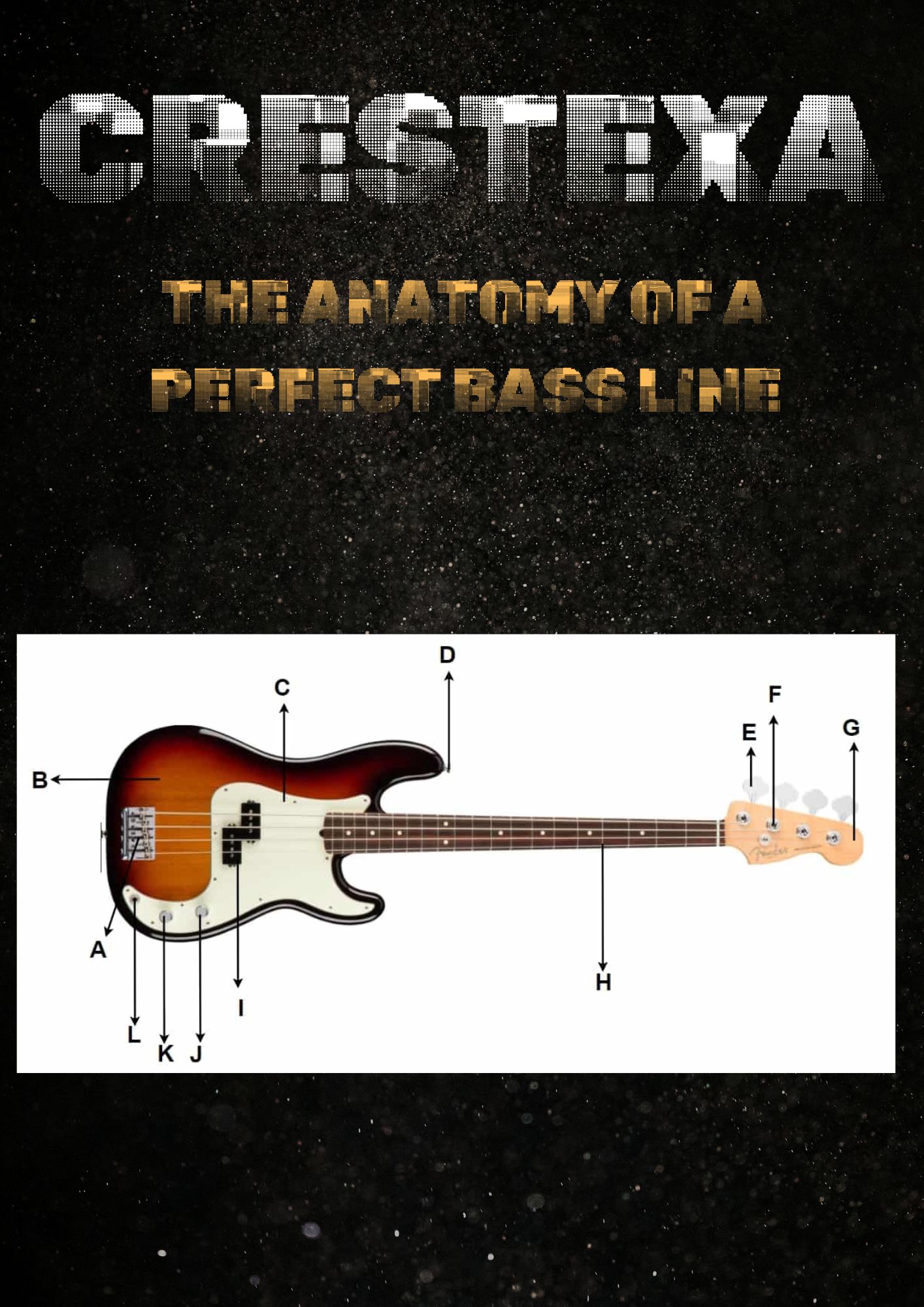The bass line may be considered to be the unseen hero of the song, while it forms one of the cornerstones that provide the foundation of any musical arrangement. From an upbeat pop pop song to the soulful feel of a ballad, through to a face-stomping rock anthem, the bass runs the entire backdrop of the track in a manner that very few other elements seem to rival Musicians and producers may need to understand the anatomy of a good bass line as they look into elevating music to a high level.

Thus, this piece delves further into what creates an excellent bass line, proper techniques for bass line composition, and how best to complement this with other forms of arrangement within the song.
The Importance of a Bass Line in Music
A bass line actually serves as the harmonic and rhythmic foundation of most music genres. It steps on the bridge to connect the rhythm section with harmony so that the melody may stand out, while at the same time giving a solid framework for the entire composition.

The bass has a unique ability to affect the feel of a song be it a smooth groove or a driving pulse. By understanding the role it plays in music, musicians and composers can be able to appreciate its importance and the intricate skills required to come up with a compelling bass line.
The Relationship between the Bass and Drums
The most important of all relations in music is between the bass and drums. It is the bass and drums combined that constitute the rhythmic foundation in which the song advances. The drum pattern sets the rhythm, but the bass will act in tandem with the kick drum, locking in for a tight rhythm section.
This interlocking of two instruments is very frequently known as the lock between the rhythm section. A well-crafted bass line often acts as a mimicry of the drums, giving the groove a deep, more cohesive feel that is natural and even infectious.
The bass is not only providing rhythm but also bringing a harmonic approach toward the song. Bass outlines the root notes of the chords that will provide a harmonic basis or framework for the rest of the band. Without a well-crafted bass line, it’s disjointed and unclear in the harmonic structure of the music. The bass gives the foundation to other instruments such as the guitar and keyboards on which they can build their melodic and harmonic input.
Elements of the Perfect Bass Line
Building the perfect bass line requires great attention to many of the important elements. It forms the skeletal framework that gives life to rhythm, melody, and harmony. So, while acting as a secondary instrument in many ways, the bass also should be driving, making sure everything works and does not simply meander into nonexistence.

Rhythm and Groove
Rhythm is probably the number one quality in a great bass line. A bass line should be solid enough to lock into the groove of the drums to propel the song forward. The syncopation can create a driving, up-tempo rhythm or a lazy groove that complements the overall feel of the track.
A steady quarter-note groove could lend itself better to a more relaxed sort of approach, adding energy to the song through rhythmic variation. Mastering rhythm is essential for making a bass line feel organic and in sync with the rest of the band.
Pitch and Harmony
While the rhythm is paramount, the pitch of the bass is also significant. The bass line should help enhance the harmonic structure of the song by stressing the root notes of the chords. In essence, though an exceptionally great bass line goes even further than tracking a chord, providing movement and variance helps develop the harmonic progression of the song.
Creative use of passing tones, chromatic runs, and arpeggios can give the bass line a more dynamic feel. By carefully selecting which notes to emphasize and when to introduce harmonic movement, the bass player creates a more interesting and nuanced musical foundation.
Melodic Movement
A melodic bass line doesn’t just serve as a passive background element; it can become an integral part of the song’s melody. A bass line with melodic movement engages the listener and provides a strong, memorable hook. This approach is common in genres like funk, pop, and jazz, where the bass line often becomes a primary musical theme. To achieve this, the bassist can use leaps, intervals, and vibrato to create tension and release. A well-crafted melodic bass line can transform an ordinary track into something truly extraordinary.
Tone and Technique
The tone of the bass is another factor that contributes to the overall impact of the bass line. The bass sound should be incorporated into the overall mix, but still stand out enough to be felt. Most bassists are experimenting with techniques to get the sound they like. Techniques like slap bass, fingerstyle, or pick playing can change the tone of the bass dramatically. More importantly, using various effects such as overdrive, reverb, or compression can give the sound added depth and character, making it cut through the mix.
Dynamics and Articulation
Dynamics is the volume and intensity with which each note is played. The perfect bass line incorporates dynamic variation, where some notes or passages stand out, while others recede into the background. Articulation plays a role in this as well—how each note is played can significantly affect the feel of the bass line in general. Techniques like staccato (short, detached notes) or legato (smooth, connected notes) add to the overall expressiveness and allow the line to grow with the emotional content of the song.

Bass Line Patterns and Techniques
A bassist’s creativity stands out when a bassist comes up with creative bass line patterns and techniques. Some of the most commonly applied techniques that come together to build an excellent bass line are summarized below.
Walking Bass Line
One of the fundamental techniques is a walking bass line-a simple way of performing quarter notes throughout while keeping in mind and defining the song’s harmonic structure. A key element in using the walking bass is the smooth motion, using chord tones mostly stepwise; but not rare in it is a chromatic inflection used for tension, resolution, or variation.
Syncopation and Funk Bass
Syncopation is a technique that deals with accents on off-beats; in music, it creates a more complex and funkier groove. Often in funk music, the combination of syncopation and sharp or percussive techniques, such as slap bass, creates an infectious groove, moving the song forward. This technique allows the bassist to become an integral part of the rhythm section, providing a dynamic and energetic feel.
Chordal Bass
In other genres like rock and pop, the bass line can take more of the nature of being a harmonic rather than a completely rhythmic sound. Chordal bass can play more than the root note of the chord, as some thirds and fifths of the chord are very useful in producing harmonic complexity, creating a better sound that fills more texture through allowing the bass to be heard both as rhythm and harmony at the same time.
Common Mistakes to Avoid in Bass Line Creation
Creating a good bass line also involves not just what you play but what you don’t. Here are some common mistakes to look out for
- Overplaying: A bass line doesn’t need to be flashy to be effective. Playing too many notes can clutter the mix and distract from the song’s groove.
- Lack of Connection to the Drums: The bass should always work in tandem with the drums. If the bass and drums are out of sync, the groove will feel weak and disjointed.
- Ignoring Dynamics: A bass line that is played at a constant volume throughout the song can feel flat. Use dynamic variation to give your bass line life.
- Underplaying: The flip side to this is when the bass line is sparse and too subtle so it might not give much harmonic or rhythmic support for the rest of the arrangement.
Conclusion: The Art of Getting it Right With the Bass Line
It is an art to create the perfect bass line and requires knowledge of rhythm, harmony, melody, and tone. A bass line that is articulated well adds groove, tension, and emotional depth, bringing a song to great heights. A good bass player understands well the essence of all its parts and how its interpretation should bring out the characteristic flavors of rhythm, pitch, tone, and technique in its support of the musical landscape of the entire composition.
